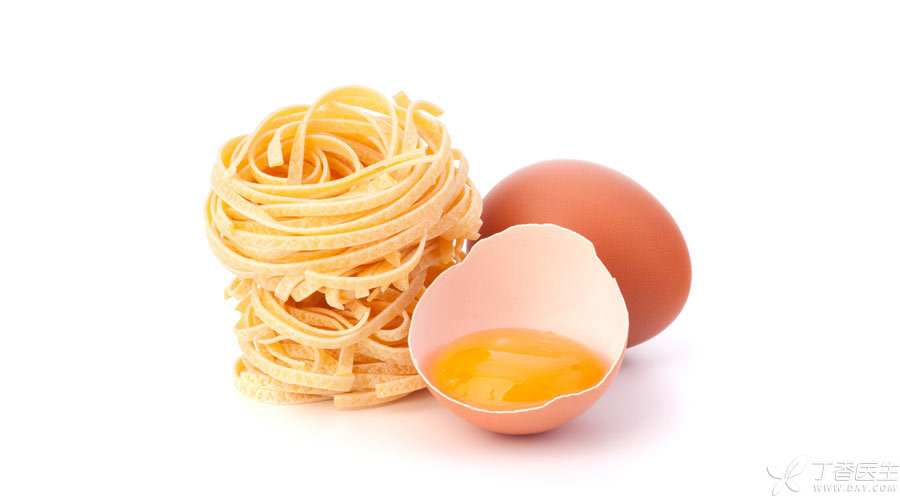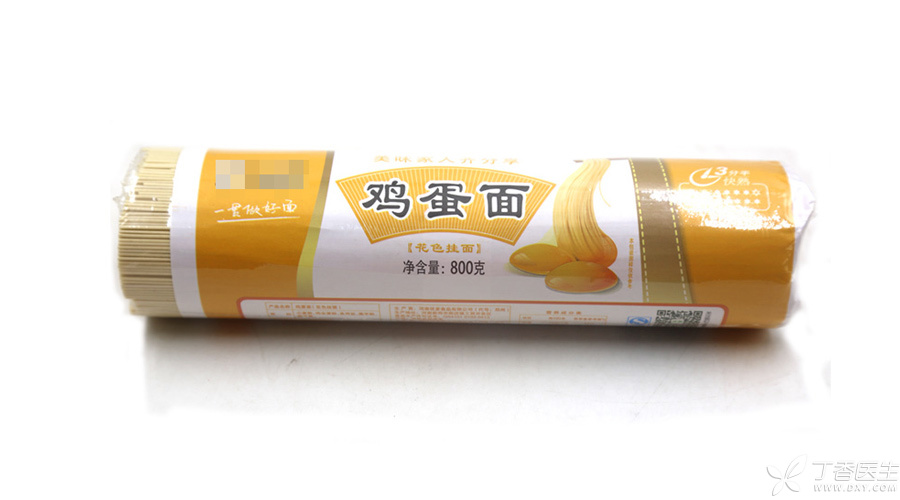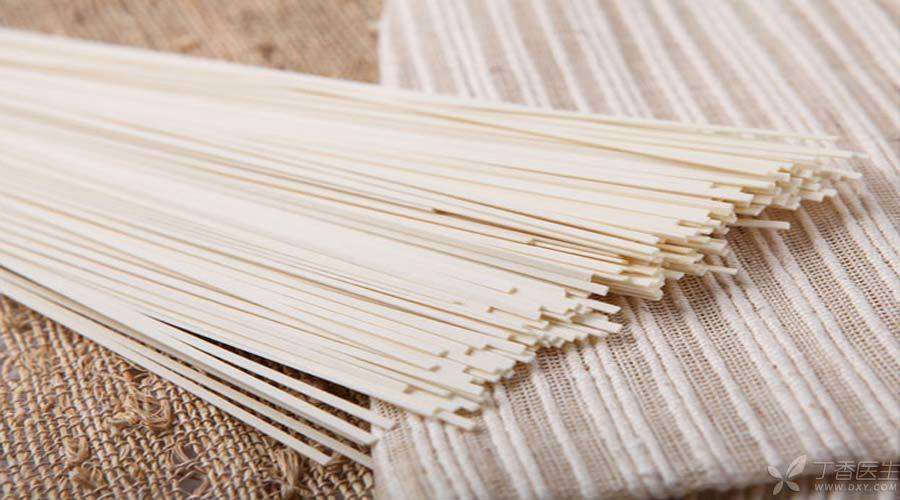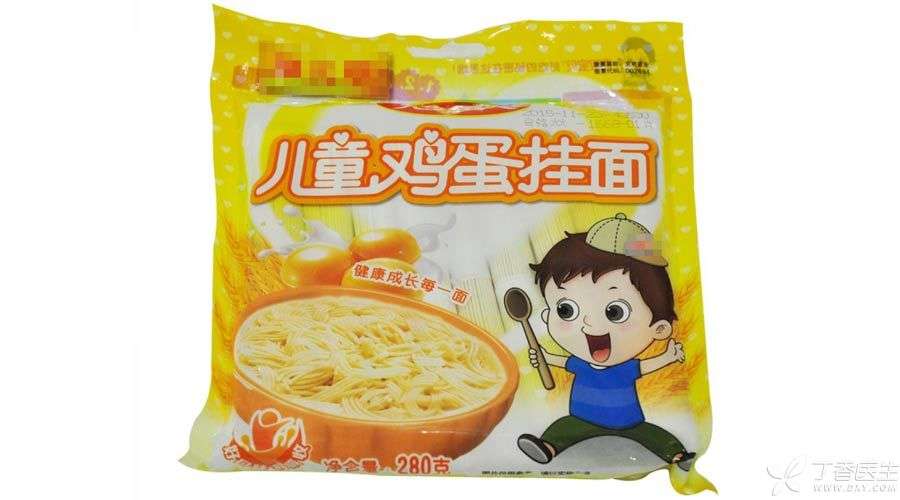
There must be no wife in the wife’s cake.
But egg noodles, you must believe in eggs, just to buy eggs. However, do you really have eggs? Where the hell are the eggs?
Let’s take a look at the ingredient list first. Egg powder is less than salt!
Look, egg noodles, what a big word! Ha ha, unfortunately, this is just the name of the product.
We know that packaged foods have ingredient lists, and the raw materials and ingredients will be listed in the order of dosage from more to less. In other words, the raw materials with the largest content and the main ingredients are ranked first in the ingredient list.
If you find an egg noodle, you will find that,
Ingredients: High-quality wheat flour, edible salt, drinking water, egg powder.
Yes, that’s right. In this fine dried noodle, eggs are actually behind salt. Salt is more than eggs!
You may ask: Is egg powder an egg? Yes, this is the raw material chosen for easy processing into dry noodles, just like milk powder is milk.
However, be careful that there are more excessive products, the name is egg noodles, and the word “egg” cannot be found in the ingredient list.

Take another look at the ingredient list. A bowl of noodles contains 3 grams of salt.
For Yangzhou people, soy sauce is indispensable for the next bowl of Yangchun noodles. But even if you don’t put a drop of soy sauce and a little salt, the noodles with clear soup and white water already contain 3 grams of salt. Don’t believe it? Look at the nutritional composition table of an egg noodle:
| Sodium | 1200 mg/100 g | NRV (nutrient reference value) 60% |
Two ounces (100 grams) of noodles contain 3 grams of salt (400 mg sodium = 1 gram of salt), accounting for 60% of the total amount of salt used throughout the day. That is to say, a bowl of noodles without any seasoning is already equivalent to the amount of salt used for two meals. How is it possible to keep the daily amount of salt below the standard? !
Therefore, salt exceeding the standard is a common problem. Everyone knows that instant noodles are high in salt, but egg noodles are also experts with salt.

Why is there so much salt in egg noodles?
Egg noodles, also known as fine dried noodles, are dry noodles with little moisture. Noodles are usually made by drying wheat flour after adding water, salt, etc.
In order to make noodles tough and not easy to cook, there are three ways:
Step 1: Add alkali
But once alkali is added, vitamin B in flour1It quickly decomposes and loses nutrition.
Step 2: Add eggs
The best way to make noodles strong and nutritious is to add eggs and turn them into egg noodles. The protein in egg white can increase the tendons of noodles, the lecithin in egg yolk, and also make noodles smooth and reduce adhesion.
However, the cost is also much higher, which is not what businesses like.
Step 3 Add salt
Therefore, adding salt has become the lowest cost and easiest way to do it. When cooking noodles, do the elders in the family like to put some salt and tell you that it won’t burn soup?
After understanding this truth, after hearing the [strength] [play, play, play] of the noodle advertisement, you can think of [salt! Salt! Salt].
The salt content in [children’s noodles] is also very high.

Most ordinary fine dried noodles have high salt content. Should children’s fine dried noodles be better?
If you look at the market, you may be scared to death: | Sodium | 1200 mg/| 60% |, the salt content of children’s dried noodles is as high as that of adults (ordinary)!
And look at the suggestions of < < Dietary Guidelines for Chinese Residents > >:
- Children under 1 year old do not need to add any salty condiments, including soy sauce. Children aged 1-3 years old, salt < 2g/day; For children aged 4 ~ 10 years old, salt < 3g/day.
Because the infant’s kidney system development is not complete, if you eat too much salt, it is easy to increase the kidney burden in the metabolic process, and may even lead to kidney damage and pathological changes. Not to mention infants, even 7, 8-year-old children eat two or two children’s noodles, salt has exceeded the standard.
Happily, some manufacturers have also realized it, so they can buy [low-salt fine dried noodles] in supermarkets recently. There are also low-salt children’s fine dried noodles products, which we can choose from on the market.
The question is: Have parents and friends noticed it and will they buy it? Please buy food for your children. You must look at the ingredient list, nutrition list and pay special attention to sodium content.
Nutritional Techniques for Cooking Noodles
A bowl of noodles can make you full, because noodles are rich in carbohydrates and can provide enough energy. However, the flour does not contain vitamin C, vitamin A and vitamin B12, iron and zinc are seriously insufficient, and protein is insufficient.
The simple and nutritious match is: tomato and egg noodles, and a few spinach can be added.
Tomatoes can provide vitamin C, potassium, lycopene, etc. Eggs are [the ideal nutrition bank for human beings]. An egg contains about 7 grams of high-quality protein, 12 vitamins and various minerals. Green leafy vegetables such as spinach are a good source of fiber and calcium. With low-salt dried noodles, it can be said that nutrition meets delicious taste.
Afraid that everyone can’t cook noodles, I would like to say two more words:
-
Drain more water: When cooking fine dried noodles, put more water, because fine dried noodles have a [hair swelling] process and need to absorb some water;
-
Use slow fire: Attention should be paid to use slow fire so that the heat goes in layer by layer from the outside to the inside along with the water. Only in this way can the dried noodles be cooked thoroughly, the noodle soup is clear and the taste is good.
